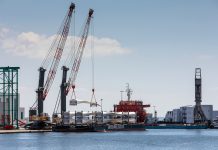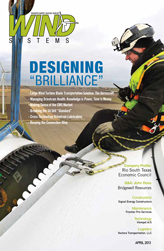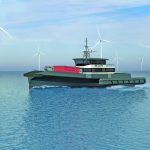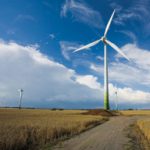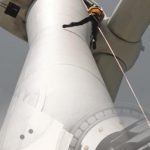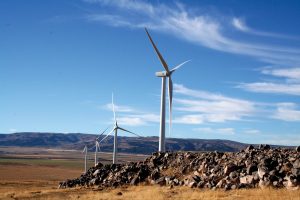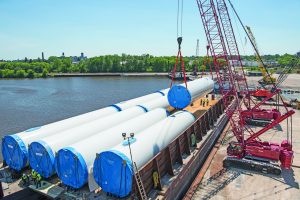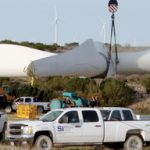Does the longstanding adage “everything’s bigger in Texas” hold water? Ask a resident or workforce member of the Rio South Texas region, and they’d likely respond to the affirmative. But there’s a chance that instead, they might take it a step further.
Population is up. Industry is up. Skilled workforce numbers are up. Quality of life indicies are up. Retail sales are up. Higher education opportunities are plentiful.
In short, everything’s getting bigger in Rio.
In 2008, communities within the four-county (Hidalgo, Starr, Willacy, and Cameron) Rio South Texas region recognized the need to pool their economic development efforts into a centralized organization. The resulting agency—Rio South Texas Economic Council—provides economic development support through combined secondary marketing efforts. The council serves as a quasi-marketing arm for its more than twenty public and private members, with the goal “to attract capital investment and jobs to the region and fostering the growth of the economy.”
A large portion of the council’s effort is spent visiting industrial trade shows. The council will be exhibiting at WINDPOWER 2013 in Chicago on May 5–8 at McCormick Place.
Texas has the most wind energy of any state in the U.S., when considering pure nameplate capacity, at more than 12,000MW. This accounts for a fifth of the nation’s total capacity.
In recent history, the Rio South Texas region—which was had previously been anemic in wind energy in comparison with the state—has seen a boom in wind energy.
Earlier this year, Charlotte, N.C.-based Duke Energy announced the completion of the Los Vientos wind farm project, located within the Rio region in Willacy County. The wind farm, announced in August 2011, was originally planned as a 200MW project.
Two months later, the utility announced that was slightly more than doubling the size of the project by adding a second phase to the project. The 402MW generated at Los Vientos is purchased by CPS Energy (first phase) and Austin Energy (second phase).
The total investment by Duke Energy was not available. But a company executive spoke of the economic impact in a January press release that announced the completion of the Los Vientos projects.
“We’re proud to be partnering with CPS Energy and Austin Energy to bring renewable energy to this region,” Duke Energy Renewables vice president Milton Howard said. “And, we couldn’t have done it without the foresight of the leaders, landowners and people of Willacy County. Thanks to them, we were able to bring 600 jobs to the area during construction, and going forward, the Los Vientos projects will continue to boost economic development, support the local school districts, and be a source of dependable tax revenue for years to come.”
The Duke projects were preceded by the completion of E.ON Climate & Renewables’ 200MW Magic Valley Wind Farm—Willacy County’s first wind farm—in August 2012. Similarly, an EC&R executive extolled the economic benefits of wind energy development during an on-site dedication.
“We are honored to be a part of the local community, and we look forward to providing economic support and renewable, homegrown energy for many years to come,” said Steve Trenholm , CEO, EC&R North America. “Wind farms create jobs, and provide an economic shot in the arm to farmers, ranchers, and rural communities across America.”
The development of two wind energy projects within such a short period of time could indeed prove to be a major boost to the Rio region.
In 2012, Texas also led the nation in terms of new wind energy installations. Developers brought 1,826MW of wind energy online in Texas last year—again, more than any other state. Rio’s Duke and EC&R projects, totaling 602MW, accounted for nearly a third of all Texas’ new wind installations last year.
Rio South Texas Economic Council members hope to turn those numbers into a trend.
Council members met with representatives from Duke and EC&R, as well as personnel from Seimens and Vestas (who were chosen as turbine suppliers for the two Willacy projects), during the WINDPOWER event in Atlanta in 2012.
Those existing projects may assist the Rio council in attracting further wind energy investment to the region as they continue their efforts at the upcoming WINDPOWER 2013 event next month in Chicago.
Located on the southernmost tip of Texas, Rio South Texas is the third largest market in Texas, and the 23rd largest market in the United States. The region also boasts the distinction of being the largest U.S./Mexico border region in the nation.
Regional population has increased more than 29 percent since 2000, according to U.S. Census numbers; and by 2015, the population is expected to show a nearly 40 percent increase over 2000 tallies. In 2010, there were more than 1.2 million residents in the region. That number nearly doubles when taking into account the number of residents living in bordering communities in Mexico.
For more information, visit www.riosouthtexas.com.

















